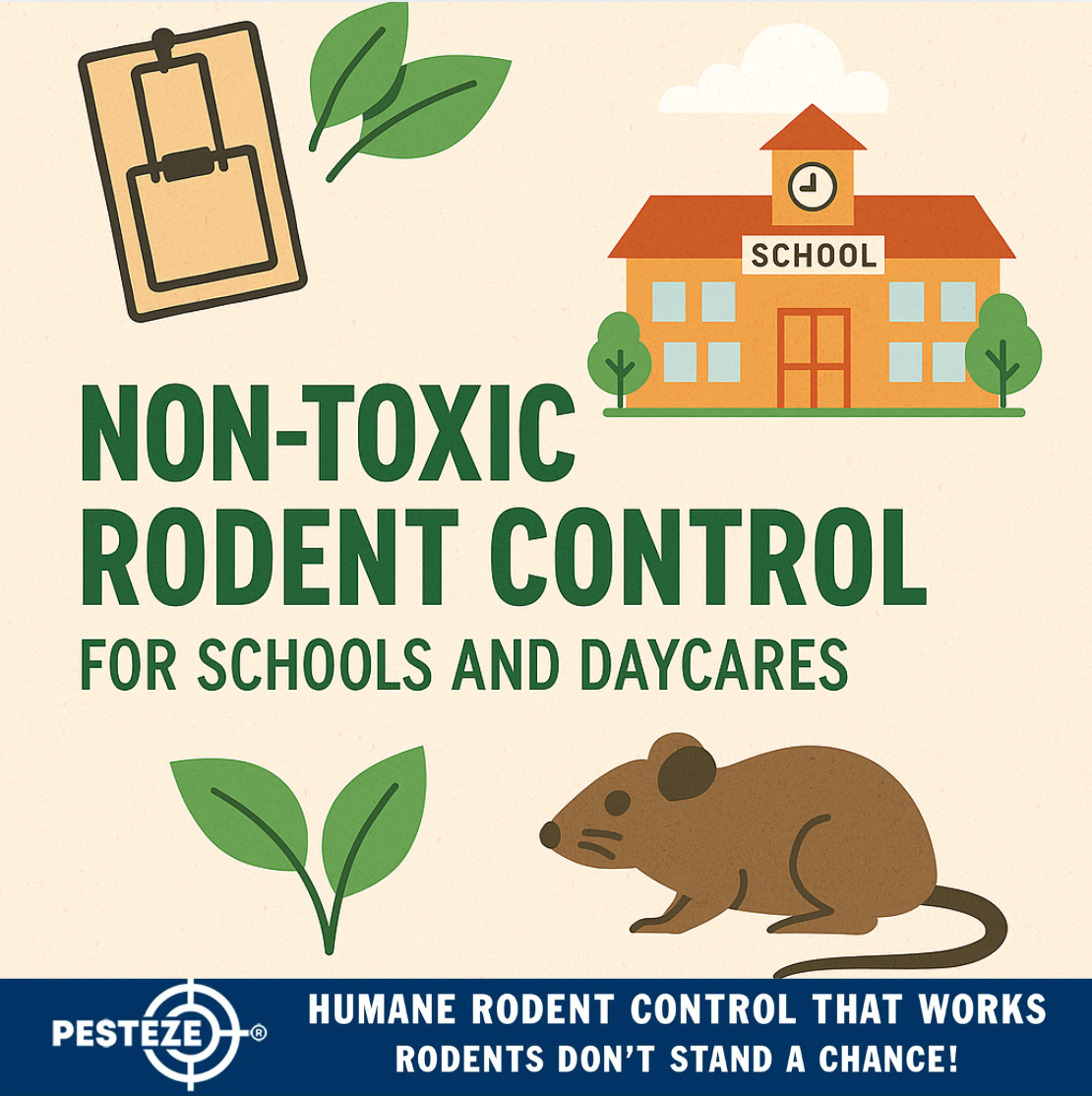NON-TOXIC RODENT CONTROL FOR SCHOOLS AND DAYCARES

NON-TOXIC RODENT CONTROL FOR SCHOOLS AND DAYCARES
SUMMARY
Schools and daycares must remain safe, healthy environments for children. This guide explores non-toxic rodent control solutions that eliminate infestations without exposing students or staff to harmful chemicals.
FEATURES
-
Child-Safe Traps: Use enclosed snap traps or humane live traps.
-
Natural Repellents: Apply peppermint oil, cloves, or eco-sprays.
-
Secure Food Areas: Lock cabinets and use sealed containers.
-
Rodent-Proofing Buildings: Seal cracks, vents, and utility gaps.
-
Sanitation Practices: Maintain strict cleaning and waste disposal.
-
Professional Green Services: Partner with eco-certified pest control providers.
DESCRIPTION
Rodent control in schools and daycares requires special care to ensure that children, staff, and the learning environment remain safe. Traditional poisons and chemical-based treatments may pose risks to young children and pets, making non-toxic methods the preferred choice for these sensitive spaces. By combining safe trapping, eco-friendly repellents, building maintenance, and strong sanitation, schools can keep rodents away without endangering health.
The first line of defense is choosing child-safe traps. Enclosed snap traps and humane live traps are designed to capture rodents without leaving dangerous mechanisms exposed to curious children. Placing these traps in restricted, hidden areas such as storage closets or utility rooms maximizes safety while maintaining effectiveness.
Natural repellents provide additional protection. Scents such as peppermint oil, cloves, or eco-certified sprays are unpleasant to rodents but harmless to people. Cotton balls soaked in peppermint oil can be placed discreetly in problem areas like kitchens or basements, providing a safe deterrent.
Food security is a major priority in schools and daycares. Rodents are drawn to snacks, crumbs, and unsealed food. By keeping all food stored in airtight containers, locking cabinets, and enforcing rules against open snacks in classrooms, the risk of attracting rodents drops dramatically.
Rodent-proofing buildings is another essential step. Sealing cracks in walls, installing mesh over vents, and securing gaps around pipes or electrical wiring can block common entry points. Maintenance teams should schedule regular inspections to catch vulnerabilities before rodents exploit them.
Sanitation is critical in preventing infestations. Daily cleaning routines should include wiping down surfaces, promptly disposing of trash in sealed bins, and ensuring that outdoor dumpsters are covered and located away from school entrances. These practices eliminate food sources and reduce rodent attraction.
For large-scale or recurring issues, partnering with green-certified pest control services is recommended. These professionals use eco-friendly techniques and humane methods that comply with child safety standards while providing long-term rodent control.
By adopting non-toxic rodent control strategies, schools and daycares can maintain safe, healthy spaces where children can learn and play without exposure to harmful chemicals or dangerous infestations.
- Saharsh Bansal


Comments 0